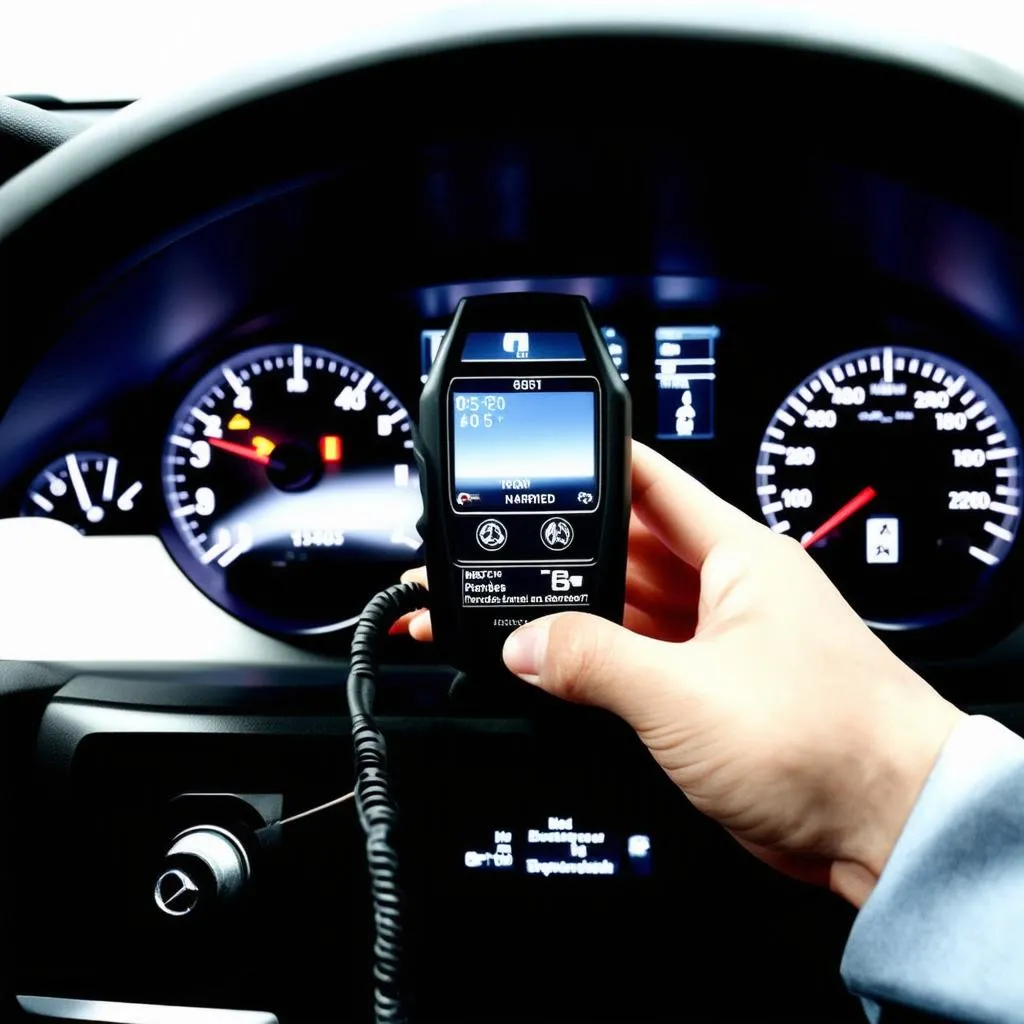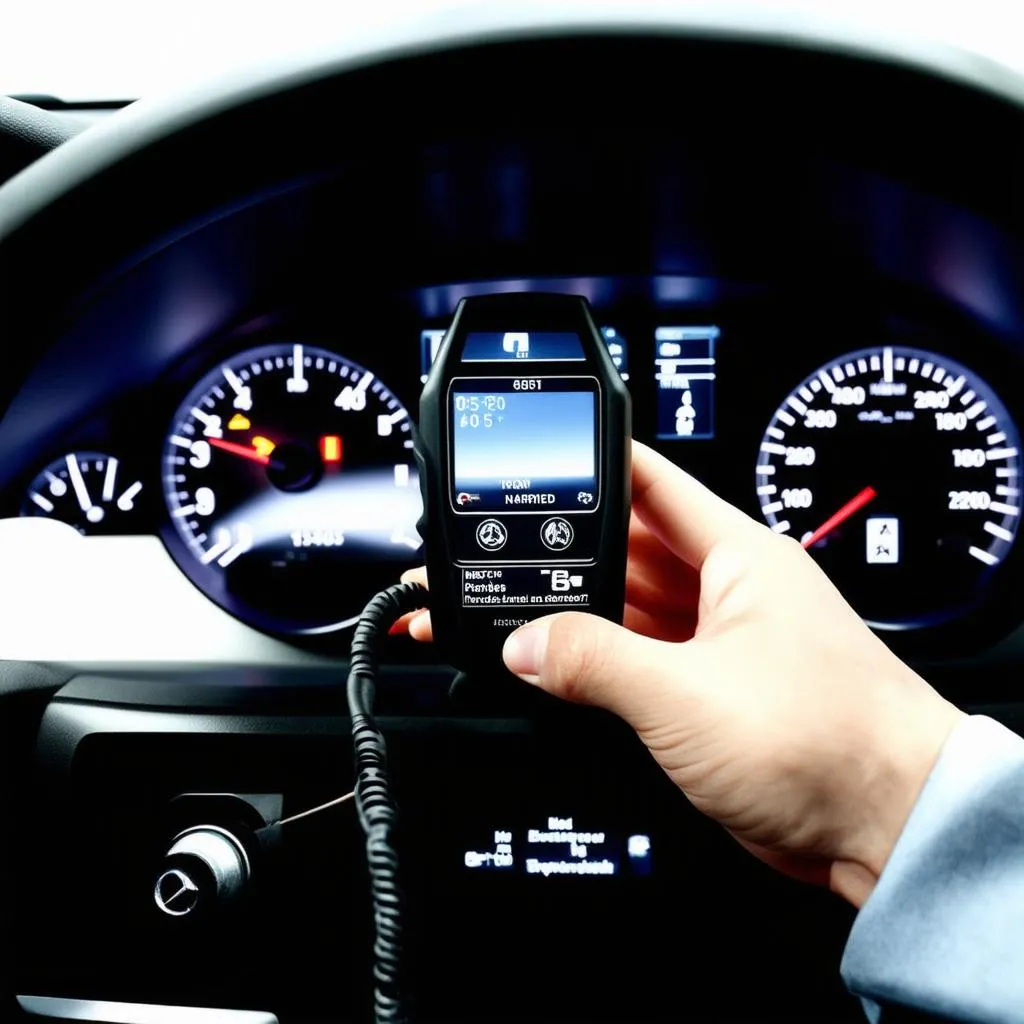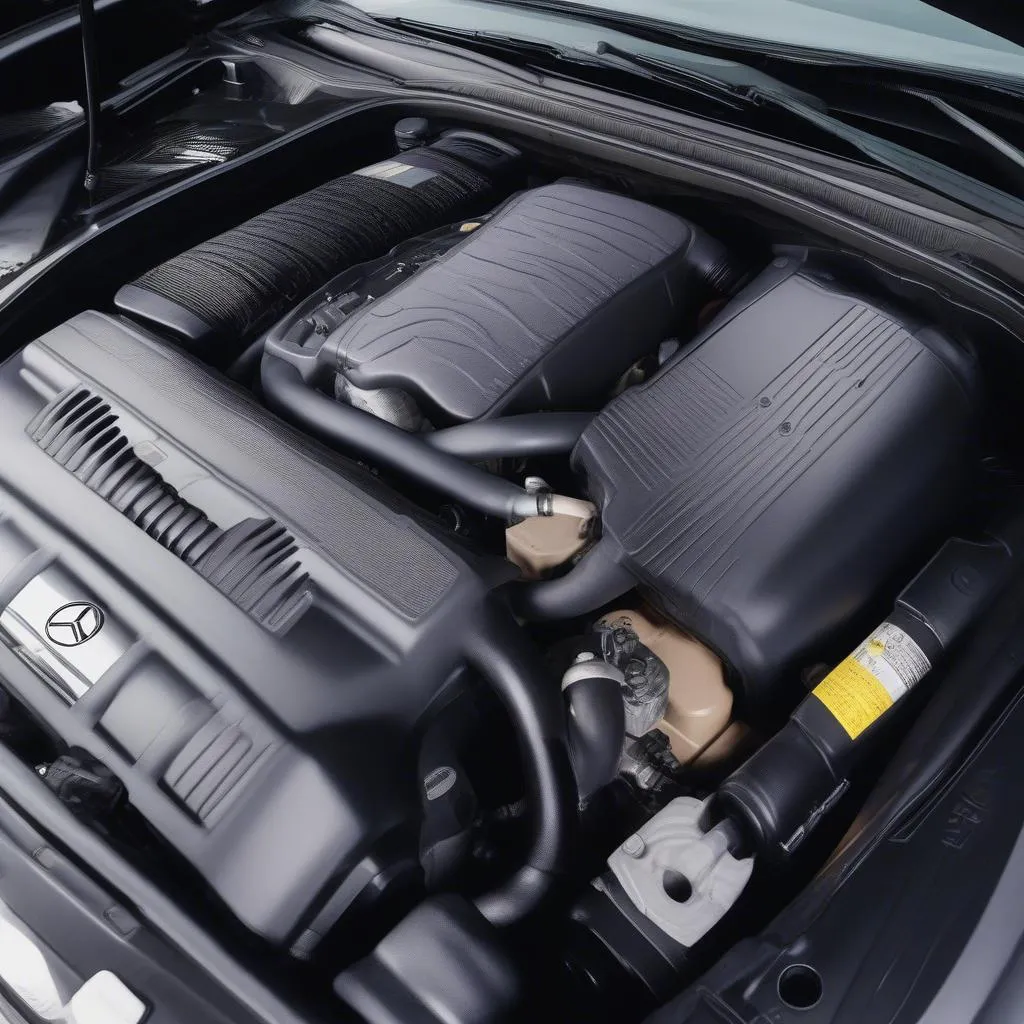If you’re a Mercedes-Benz owner, you know that these vehicles are renowned for their sophisticated engineering. But with complex systems comes the potential for complex issues. That’s where OBD2 diagnostic tools come in handy. But can any OBD2 scanner delve into the intricacies of a Mercedes? Let’s find out!
Understanding OBD2 and Mercedes-Benz
First, a quick overview. OBD2, or On-Board Diagnostics, is a standardized system in vehicles since 1996. It allows a device to communicate with your car’s computer, reading diagnostic trouble codes (DTCs) that indicate malfunctions.
Now, here’s the thing about Mercedes-Benz. While they adhere to OBD2 standards for generic codes, they also utilize their own proprietary protocols for more in-depth diagnostics. This means a basic OBD2 scanner might read some codes, but it won’t unlock the full picture.
Why You Need More Than a Basic OBD2 Scanner
Imagine this: your check engine light flashes. A generic OBD2 scanner might tell you there’s a problem with the emissions system. But a Mercedes-specific tool can pinpoint the exact sensor or component causing the issue, saving you time and potential misdiagnoses.
Think of it like this: you wouldn’t use a wrench to fix everything on your Mercedes. You’d want specialized tools for specific jobs. The same applies to diagnostics.
What to Look for in a Mercedes-Benz Diagnostic Tool
Here’s where it gets interesting. To truly harness the diagnostic power your Mercedes deserves, consider these factors:
- Model Coverage: Ensure the tool supports your specific Mercedes model year.
- Code Reading & Clearing: Beyond generic OBD2 codes, it should access Mercedes-specific codes.
- Live Data: The ability to view live data streams from various sensors is crucial for in-depth analysis.
- Special Functions: Look for features like component activation, adaptations, and coding for advanced troubleshooting.
FAQs about Mercedes-Benz Diagnostic Tools
Q: Can I use a generic OBD2 scanner for my Mercedes?
A: While it might read some basic codes, it won’t provide comprehensive diagnostics for Mercedes-specific systems.
Q: What are some reputable Mercedes-Benz diagnostic tool brands?
A: You’ll find a range of options from companies specializing in automotive diagnostics. It’s best to research and compare features to suit your needs.
Q: Do I need professional-level tools for DIY diagnostics?
A: Not necessarily. Several user-friendly yet powerful options cater to DIY enthusiasts, offering a balance of features and ease of use.
 Mercedes-Benz Diagnostic Tool
Mercedes-Benz Diagnostic Tool
Choosing the Right Tool for You
Finding the right diagnostic tool can feel overwhelming, especially with the variety available. To make an informed decision, consider your technical expertise and the level of diagnostics you plan to perform.
- For basic code reading and resetting: A more affordable, generic OBD2 scanner that supports Mercedes-Benz might suffice.
- For in-depth diagnostics and advanced functions: Invest in a dedicated Mercedes-Benz diagnostic tool.
“Investing in a quality diagnostic tool empowers you to understand your Mercedes better,” says automotive electronics expert, Dr. Emily Carter, author of “The Modern Mechanic’s Guide to Automotive Electronics.” “Knowledge is power, and the right tool gives you the insights needed for effective troubleshooting.”
 Mercedes-Benz Engine
Mercedes-Benz Engine
In Conclusion
While a generic OBD2 diagnostic tool might scratch the surface, a dedicated Mercedes-Benz tool is your key to unlocking comprehensive diagnostics. By investing in the right tool and knowledge, you can take control of your Mercedes’s health, troubleshoot issues effectively, and ensure it stays in top condition for miles to come.
For a curated selection of diagnostic tools suited for various Mercedes-Benz models, explore the offerings at CARDIAGTECH. Our team can help you find the perfect tool to meet your diagnostic needs.



